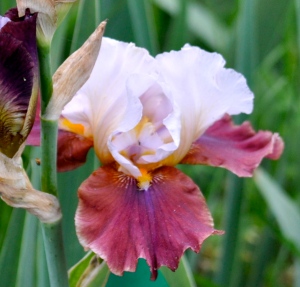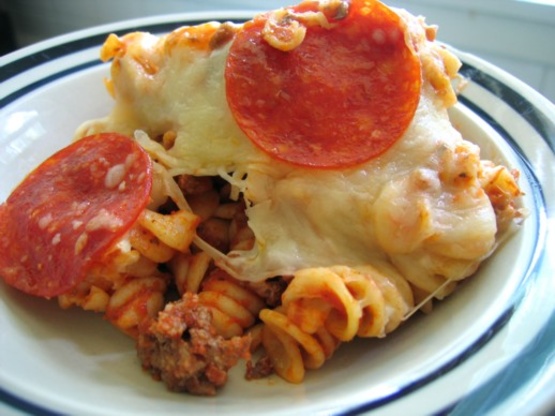Most perennials benefit from applications of organic mulches during the growing season to retain moisture in the soil and smother weeds during the growing season. Grass clippings, shredded leaves or bark, compost, and other organic materials also improve the soil as they break down.
Watering
While some perennials are drought-tolerant, many need plenty of water. If the soil dries out due to lack of rain, it's important to thoroughly soak the soil when you water, not just wet the surface. It's also important to keep the foliage and flowers as dry as possible to prevent disease. Soaker hoses and drip irrigation do this best. If you use sprinklers, run them in the morning so that the plants dry quickly in the sun. Watering individual plants by hand takes patience to supply enough water to thoroughly soak the soil.
Fertilizing
Most perennials do not require heavy fertilization. You can work in a small handful of low-nitrogen fertilizer (5-10-5, for example) in a ring around the plant in early spring, and perhaps again two more times at 6-week intervals. Fertilize late-flowering plants once more in late summer. Total application should be less than 4 to 5 pounds per 100 square feet. Keep fertilizer off foliage to prevent burning. Use slow-release or organic fertilizers to reduce burning concerns. Organic fertilizer is available at most big box stores, or make your own with compost and other organic matter.
Staking
Some taller perennials tend to fall over, especially when they are heavy with flowers. To keep them upright, you can locate them so other plants help support them, or back them up against a fence or other structure and fasten them with twine. Another alternative is to insert stakes of wood, bamboo, or other unobtrusive material in the soil adjacent to plants while they are still small and, as they grow, fasten the plants to the stake. Be careful to avoid damaging roots. Other commercial products are available to support plants.
Pinching
Some branching perennials respond well to pinching -- removing the growing tips by pinching off the small, developing leaves at the ends of stems. This forces more lateral growth, making the plant bushier and shorter. Aggressive pinching may delay flowering in some species or cause plants to flower at a shorter height. Perennials such as Asters, boltonia, Russian sage, garden phlox, and upright sedums (such as 'Autumn Joy'), as well as annuals of Zinnias, Geraniums, begonias and more respond well to pinching.
Thinning
This practice helps increase air circulation and prevent disease in perennials, such as garden phlox and beebalm, that are prone to mildew and fungal leaf spots. When these plants are about a quarter of their full height, cut half of the stems to ground level. This can also increase stem strength and flower size. Pruning before flowering You may want to cut back some perennials by 12 to 18 inches in early summer. Prune them before flower buds are set (Azaleas) or, for late-summer or early-fall blooms, after the buds are set but before flowers open. (Caution: With some species, pruning after flower bud set will eliminate flowering altogether.) This will delay flowering and shorten flowering height, so plants are less likely to flop without staking. For example, if you cut back coneflowers in early June, they will bloom until late September. If cut back in early July, they will bloom into October. Pruning after flowering some early bloomers, such as creeping phlox, perennial candytuft, and rockcress, may bloom again if sheared back by half immediately after their first bloom. Many summer bloomers benefit by cutting back to the leaves at the bottom of the plant after flowering. Try this with yarrow, ladies' mantle, shasta daisy, delphinium, cranesbill (geranium), catmint, salvia, and veronica. Depending on species, age, and other factors, other summer bloomers do better with less aggressive pruning.
Disbudding
With some perennials, especially those used for cut flowers such as peonies, Dahlias and chrysanthemums, you can encourage fewer but larger blooms by removing the smaller lateral flower buds, forcing plants to put more energy into the terminal bud remaining at the top of the plant. Or you can remove the terminal bud and encourage more (but smaller) lateral flowers.
Deadheading
Remove spent flowers after blooms start to fade. This keeps the plants from wasting energy on seed production and keeps them looking neat. In some species, deadheading can encourage another flush of flowering. It also prevents perennials that reseed aggressively from spreading where you don't want them. Some of these include Gerbera Daisies, Salvia, flowering onions, columbines, golden marguerite, foxglove, coneflower, feverfew, Siberian iris, and balloon flower. To attract birds to your garden, don't deadhead species with seed favored by birds, such as coneflowers, black-eyed Susans and sunflowers. Deadheading biennials sometimes encourages them to overwinter an additional season. As a general rule, only remove the faded blossom and stem down as far the next healthy blossom or set of leaves. With some perennials, it's best to cut back to the leaves at the bottom of the plant after they are finished flowering.
Deadleafing
Remove dead leaves to make room for new foliage. This improves the appearance and health of the plant. Dead leaves may be natural or they may be a symptom of larger problems. Fall care Cut back most perennials to about 3 inches from the ground. Any closer may damage crowns. Remove debris from the garden to help prevent diseases. Wait until spring to cut back some species, including European ginger, bishop's hat, ferns, Lenten rose, ornamental grasses, and upright sedums (such as 'Autumn Joy'). In addition to adding winter interest, some perennials overwinter better if left uncut. If the growing season has been dry, water deeply in fall before the ground freezes.
Division
Many perennials begin to decline after a few years. They don't grow as vigorously as they did the first few years after planting and they flower less. The center of the clump may appear dead, with little or no growth. When this happens, it's a good sign that the plant is ready to be divided. The best times and methods of dividing perennials varies with species. In most cases, you divide plants when they are dormant, either early in the season before they break dormancy or in fall so that the roots of the new plants can get settled in before the ground freezes. In most instances, you dig out the entire plant, wash the soil off the roots, and cut or pull them apart into several or many pieces. Sometimes this can be quite difficult, especially with older plants and ornamental grasses, requiring the use of shovels, spading forks, or picks. Focus on preserving the newer, more vigorous roots and discard older or diseased parts. Replant the divisions into a larger area than the plant once occupied, using the same spacings and soil preparation that you would use for new plantings.
If you enjoyed this article, want to know more about this or other related interesting topics, please like and share this article. Be sure to like us, so you don’t miss anything, we are Sweet Basil Farm & Gardens, on Facebook and other social media. We are a local producer of farm fresh fruits and vegetables and members of the American Poultry Association, licensed by the Georgia Dept. of Agriculture as Poultry Dealers and Brokers, and a proud member of the Georgia Grown program, a division of the Georgia Dept. of Agriculture. We also breed, sell and ship poultry, pet pigs, bearded irises and much more. We have an 80 acre working farm, putting great emphasis on all natural gardening and livestock management practices. An 1840s general store is situated on our property, and serves as our on-site farmer’s market.Fresh garden vegetables, fruit nuts, eggs and flowers straight from the garden to you. We pick during the week, YOU pick available on Friday and Saturday. Conveniently located off of Interstate 75 near the Johnstonville Rd exit (#193). We are six miles west, located in Barnesville, Lamar County, Georgia.
Special thanks to the gardening department at Cornell University for a great publication, as well as contributions from J. David Matthews, of Barnesville, Georgia in preparation of this article. Photo credits to landscapenashville.com.











